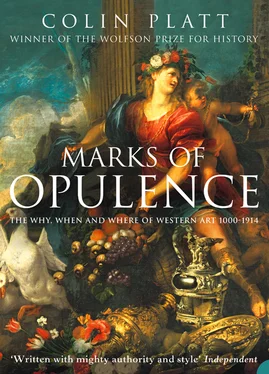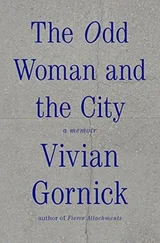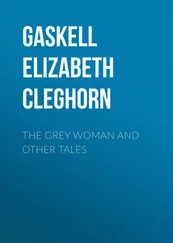In his own terms, Kmtia’s analysis was perfectly correct: there was too much silver in circulation, forcing up the face value of the Polish gold gulden and causing prices to rise out of control. However, the population of the West was recovering swiftly also, and a superabundance of bullion – additionally swollen from the 1520s by Spanish-American gold and silver – was not the only explanation of the ‘price revolution’ which saw European prices, after their long stagnation, rise between three and four times in just one century. George Hakewill (d.1649), the English scholar and divine, saw this clearly. Writing in the 1620s, Hakewill recognized that it had not been ‘the plenty of coin’ alone which had caused the upward drift of prices but ‘the multitude of men’ – for ‘either of which asunder, but much more both together, must need be a means of raising the prices of all things’. 4 ‘That the number of our people is multiplied’, wrote William Lambarde in the 1590s, ‘is both demonstrable to the eye and evident in reason’. And whereas Lambarde’s list of likely causes included the broods of married clergy – ‘which was not wont to be’ – he could also point more plausibly to the fact that ‘we have not, God be thanked, been touched [in England] with any extreme mortality, either by sword or sickness, that might abate the overgrown number of us.’ 5
Just as everybody by the 1590s had a view on overcrowding, so the contemporary price inflation produced a literature of its own, explanations ranging from usury (the old enemy) to enclosure (the new), from harvest failures and civil commotion to state monopolies and excessive government spending. Fashion also took its share of the blame. Poland’s youths, Bishop Tarlo had complained during the currency scare of 1542, ‘cannot go comfortably and smoothly without foreign merchandise as nourishment and clothing’. 6 And seven years later, it was Sir Thomas Smith’s lament that ‘there is no man [in England] can be contented now with any gloves than is made in France or in Spain; nor kersey, but it must be made of Flanders dye; nor cloth, but French or frizado; nor owche, brooch, nor aglet, but of Venice making or Milan; nor dagger, sword, nor girdle, or knife, but of Spanish making or some outward country; no, not as much as a spur, but that is fetched [bought] at the Milaners [milliners].’ 7
Complaints of this kind are often heard, and are not usually given much credence. However, Sir Thomas – ‘physician, mathematician, astronomer, architect, historian, and orator’ – was no ordinary Colonel Blimp. And as one of the promoters of Edwardian England’s recovery from the chaos of Henry VIII’s Great Debasement, he was exceptionally well placed to appraise for himself the consequences of over-rapid growth. As to how it all began, historians today have yet to agree on fundamentals – ‘the price revolution was a phenomenon of [population-led] bullion velocity rather than of bullion imports’ (Harry Miskimin); ‘the price rises in England were not caused by the influx of precious metals but by … the upsurge of credit and the rise of banking and of the inland bill of exchange’ (Eric Kerridge); ‘the price revolution evidently began in Spain … [and was] a monetary phenomenon after all’ (Douglas Fisher). 8 However, the fact remains that, after the long price stability of the late fourteenth and fifteenth centuries, prices continued to rise through every decade of the next; that economies were growing and that their growth was real; and that it was not just prices which rose but profits also.
Much emphasis has been placed on the inflationary effect of large-scale imports of Spanish-American bullion. And it is undoubtedly true that inflation in Spain from the 1520s forced up price levels in other nations also. But the turn-around of the West’s economy had begun much earlier. And it was in the late 1460s and 1470s, when silver returned and the mints re-opened, that rents and other revenues became collectable again and that the purses of the rich were replenished. It was not American gold that enabled Ludovico il Moro (d.1505), the Sforza ruler of Milan, to attract Donato Bramante from Urbino and Leonardo da Vinci from Florence, but a strong revival of Lombard industry and commerce. In Florence, it was the recovery of banking profits from the 1470s that allowed Lorenzo de’ Medici (the Magnificent) and his fellow bankers to commission work of the highest quality from Andrea del Verrocchio and Sandro Botticelli, Filippino Lippi and Domenico Ghirlandaio. And what supported Andrea Mantegna at Mantua, Francesco del Cossa at Ferrara, and Piero della Francesca at Urbino, was always less the old-style profits of war of their respective Gonzaga marquesses and Este and Montefeltro dukes, than a very visible escalation of landed wealth. Baldassare Castiglione’s hugely influential dialogue, Il Cortegiano (The Courtier), while first drafted at Urbino in 1508, took many more years to complete. And his cherished recollections of life in Duke Guidobaldo’s palace – ‘the very Mansion place of mirth and joy’ – no doubt improved in the telling. But Castiglione (like Sir Thomas Smith) was an expert witness: a professional courtier all his life. And his final judgement, in consequence, carries weight. ‘There was then to bee heard’, Castiglione remembered of those long evenings of lively talk, ‘pleasant communications and merie conceites, and in everie mans countenance a man might perceive painted a loving jocundnesse … And I beleeve it was never so tasted in other place, what manner a thing the sweete conversation is that is occasioned of an amiable and loving company, as it was once there.’ 9
In April 1528, when his book was at last published, Castiglione was in Spain at the Court of Charles V, where he was Clement VII’s papal nuncio. Less than a year later, he was dead. However, there had been manuscript versions of Il Cortegiano in circulation for at least ten years before his death, and Castiglione’s book was an immediate success. Charles V (Holy Roman Emperor) and Francis I (King of France) each received a presentation copy from the author, as did Pope Clement VII (Castiglione’s employer) and Isabella d’Este (his patron). Other recipients of complimentary copies included Eleonora Gonzaga (Duchess of Urbino), Federico Gonzaga (Marquis of Mantua), Aloysia Gonzaga Castiglione (the writer’s mother), and Ippolita Fioramonda (Marchioness of Scaldasole). Thomas Cromwell (the English statesman) is known to have possessed a copy as early as 1530; in the following year, Rosso Fiorentino (the Mannerist painter) had another; in 1545, a third was on its way to Peru. 10 Translated first into Spanish (1534), then French (1537), then English (1561) and finally German (1565), nothing better demonstrates the aspiration, widely-shared across the West, for a life-style characterized by good talk and sensitive to the arts on the perceived model of Guidobaldo’s Urbino. It was Victor Hugo who once said: ‘Jesus wept; Voltaire smiled. Of that divine tear and of that human smile the sweetness of present civilization is composed.’ 11 He spoke in 1878 at a commemoration of the centenary of Voltaire’s death. But almost four centuries earlier, in Castiglione’s time, that synergy was already present at Urbino.
Jesus wept for Lazarus. In 1528, he had greater cause for weeping in his Church. Castiglione, the pope’s envoy, took Clement VII’s initial blame for the Sack of Rome on 6 May 1527. But there were many, even then, who saw the looting of Rome’s treasures by Charles V’s unpaid troops as a visitation of God’s wrath on Clement himself and on the venality and chronic nepotism of his Court. A decade before, the growing secularization of the papacy in the pursuit of dynastic ends had been a major cause of Martin Luther’s disaffection when, on 31 October 1517, he nailed his ninety-five theses to the church door at Wittenberg, thereby launching the German Reformation. His target in that year had been the Medici pope, Leo X (1513–21), second son of Lorenzo the Magnificent. But already in 1509 it was the della Rovere warrior-pope Julius II (1503–13), nephew of Sixtus IV (1471–84), whom Erasmus had pilloried (but prudently failed to name) as ‘the deadliest enemy of the Church’, along with those earlier ‘impious pontiffs’ – Innocent VIII (1484–92), Alexander VI (1492–1503), and Sixtus himself – ‘who allow Christ to be forgotten through their silence, fetter him with their mercenary laws, misrepresent him with their forced interpretations of his teaching, and slay him with their noxious way of life!’ 11 ‘They that will be rich [Paul advised Timothy] fall into temptation and a snare … For the love of money is the root of all evil: which while some coveted after, they have erred from the faith, and pierced themselves through with many sorrows.’ ( 1 Timothy 6:9–10)
Читать дальше












